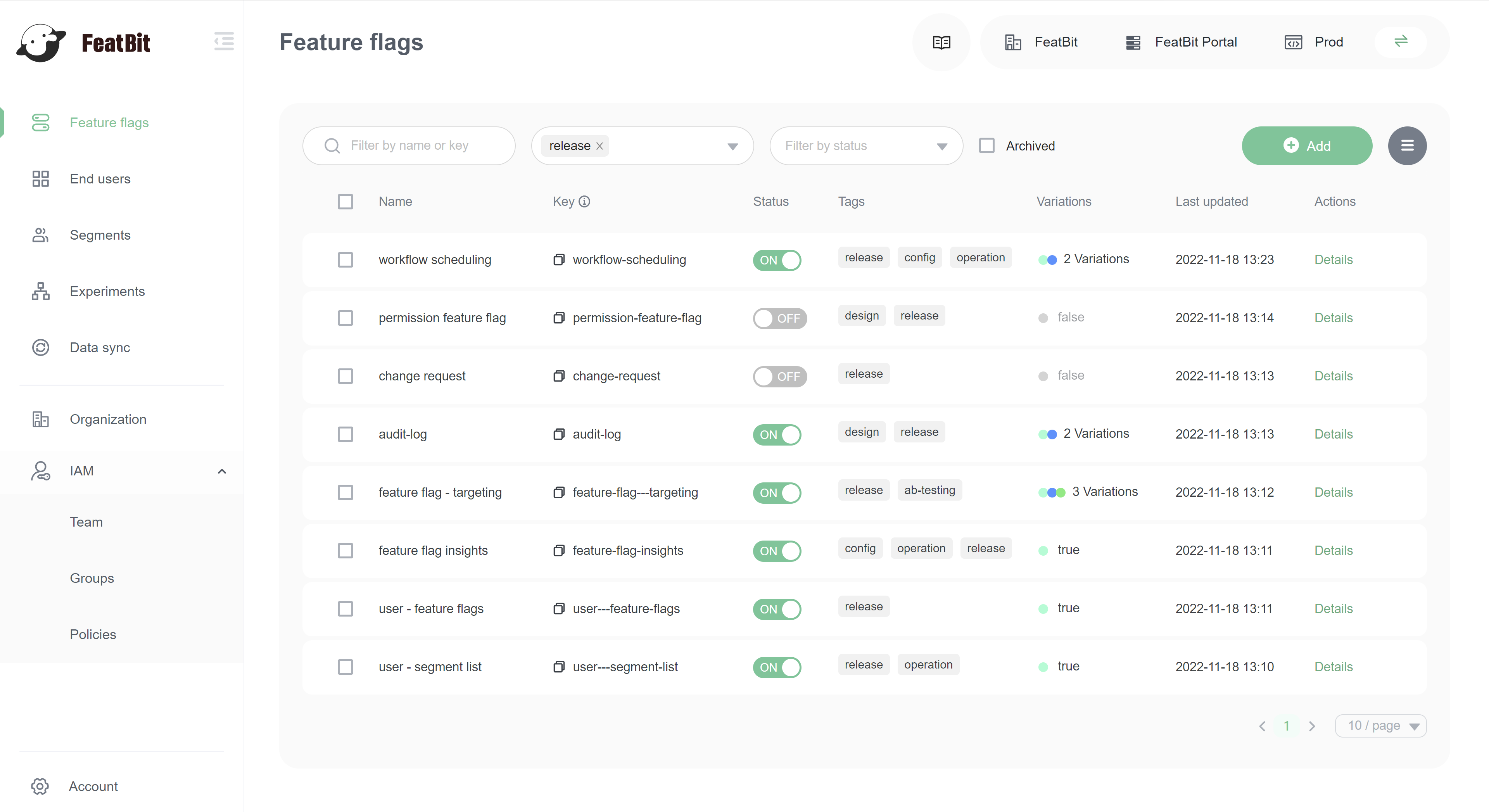Innovate
Your Software
Faster without Risk
Innovate Your Software Faster without Risk
Why companies need Feature Flags service

What are Feature Flags and why companies need them
Feature flags or feature toggles are software development methodologies that allow developers to turn features on and off independently of code deployment. This means developers can work on new features or make changes to existing ones without disrupting the entire system's performance. Companies use feature flags to reduce delivery risk by identifying any bugs or issues in the new release before it goes live for end-users.
The use of feature flags also enables companies to release software faster as they can deploy new code in smaller increments and assess its performance. By continually releasing new features, companies can innovate faster by gaining valuable feedback from early adopters and exploring new market opportunities. Feature flags can also help companies offer personalized experiences to their customers by enabling them to selectively roll out new features to specific groups of users.

Benefits of Feature Flags for developers
Reducing delivery risk
Feature Flags service is an essential tool for developers as it allows them to test new features and make necessary changes without impacting the overall performance of their application. One significant benefit of using feature flags is risk reduction. By gradually rolling out new features to a subset of users, developers can mitigate the risk of rolling out new features all at once, preventing any catastrophic failures.
Feature Flags enable developers to test new features in real-time and gather feedback from users before implementing the changes. This approach helps developers to identify problems early in the development process, which can reduce the overall cost of development. By using Feature Flags, developers can test new code changes in production with a small subset of users, and if the feature works as expected, they can then roll it out to a larger audience. This approach helps to reduce the risk of deployment failure, preventing any significant financial or reputation damage to the organization.
Shipping software faster
Feature flags provide a significant benefit to developers by enabling them to ship software faster. With feature flags in place, developers can now release new features to a subset of users and gradually roll out to everyone. This not only helps in ensuring quality control and minimal disruption to the end-users but also enables the development teams to make changes without fear of breaking the product.
Feature flags also help developers to quickly respond to feedback collected from the subset of users and make necessary adjustments before launching the changes to the entire user base. By allowing developers to test and deliver new features more efficiently, feature flags ultimately help in reducing the time it takes to get new features and updates to the market.
Benefits of Feature Flags for product managers
Gathering feedback
The Feature Flags service can provide a lot of benefits to product managers, one of which is the ability to gather feedback from a subset of users. This is because product managers can use Feature Flags to control which features of their products are available to specific users, and they can use this control to try out new ideas and get feedback before a feature is made available to all users. This allows the product team to make data-driven decisions based on user feedback, leading to more responsive and effective product development.
By gathering feedback from a controlled set of users, product managers can better measure the impact of new features and changes. Feature Flags can not only lead to more effective product development but also help teams prioritize what features to work on next. This approach also makes it easier to roll out new features or updates to different user groups, ensuring the changes are successful without disrupting the user experience. Ultimately, using Feature Flags for gathering feedback can help teams develop better products that users will love.
Making data-driven decisions
Feature Flags are essential for product managers to make data-driven decisions. With feature flags, the product managers can test the new features with a subset of users and gather feedback. This feedback will enable them to make informed decisions regarding the product, ensuring its overall success.
In addition to that, Feature Flags enable companies to release new features faster, reducing the development time, effort, and complexity. As a result, they can experiment with new features or improvements without affecting the entire user base. This ensures the stability of the product, providing an improved user experience. Overall, Feature Flags help product managers to make data-driven decisions, which is vital to the success of any company.
Benefits of Feature Flags for customer success
Providing better support
Feature Flags offer several benefits to companies, and one of them is providing better support to customers. With the help of Feature Flags, customer success teams can easily troubleshoot issues with a subset of users without affecting the rest of the user base. This not only helps in resolving issues quickly but also ensures that other users are not impacted.
In addition, Feature Flags allow customer success teams to test and validate new features before releasing them to the entire user base, ensuring a smooth experience for everyone. This not only improves customer satisfaction but also helps companies reduce the risk of negative impact caused by new features. By leveraging Feature Flags service, companies can provide better support to their customers and enhance their overall experience with the product.
Improving customer satisfaction
The use of Feature Flags is essential for companies to enhance their customers' satisfaction because they allow teams to troubleshoot issues in real-time. With Feature Flags, customer teams can identify bugs or problems affecting a small group of users and fix them before they become widespread issues. By doing so, customer teams can prevent unwanted customer churn or dissatisfaction. Additionally, Feature Flags enable customer teams to test new features or changes with a subset of users, allowing them to gather valuable feedback without affecting all customers. Ultimately, Feature Flags can help companies to tailor their product to customers' needs, enhancing retention, and overall customer satisfaction.
Conclusion
In summary, feature flags have become an integral part of the software development process for companies looking to reduce risks, accelerate innovation and offer personalized experiences to their end-users. Feature flags help companies achieve these goals by allowing developers to work independently and release code in smaller increments, making it easier to identify any issues early on before they affect the system's performance.